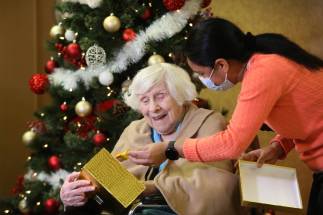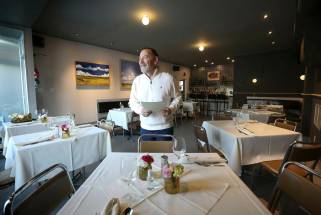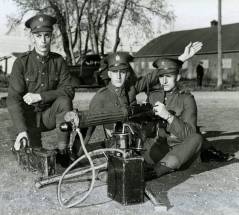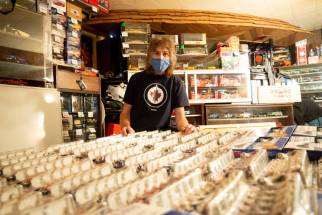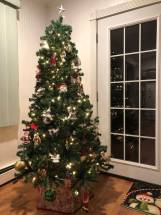O Convalescent Tree COVID remains an ever-present menace at Convalescent Home, but the holiday spirit has returned in small but meaningful ways
Read this article for free:
or
Already have an account? Log in here »
To continue reading, please subscribe:
Monthly Digital Subscription
$0 for the first 4 weeks*
- Enjoy unlimited reading on winnipegfreepress.com
- Read the E-Edition, our digital replica newspaper
- Access News Break, our award-winning app
- Play interactive puzzles
*No charge for 4 weeks then price increases to the regular rate of $19.00 plus GST every four weeks. Offer available to new and qualified returning subscribers only. Cancel any time.
Monthly Digital Subscription
$4.75/week*
- Enjoy unlimited reading on winnipegfreepress.com
- Read the E-Edition, our digital replica newspaper
- Access News Break, our award-winning app
- Play interactive puzzles
*Billed as $19 plus GST every four weeks. Cancel any time.
To continue reading, please subscribe:
Add Free Press access to your Brandon Sun subscription for only an additional
$1 for the first 4 weeks*
*Your next subscription payment will increase by $1.00 and you will be charged $16.99 plus GST for four weeks. After four weeks, your payment will increase to $23.99 plus GST every four weeks.
Read unlimited articles for free today:
or
Already have an account? Log in here »
Hey there, time traveller!
This article was published 23/12/2021 (1448 days ago), so information in it may no longer be current.
It first lit up the Convalescent Home of Winnipeg as a Christmas tree, but then there was no Christmas.
For the next year, it stayed upright in a corner, in its own way an intrepid soldier of the battle against COVID-19. It watched an outbreak rip through the home in December 2020; it watched as vaccines rolled out, and families started to visit again.
It stayed up because Sherry Heppner decreed it. The personal-care home had lost so much joy to the virus, Heppner figured, that something of the season ought to remain until it was safe to celebrate again. There were no Christmas concerts and holiday gatherings, and even gifts had to be confiscated during those bleak days in late 2020. Worst, families couldn’t come in.
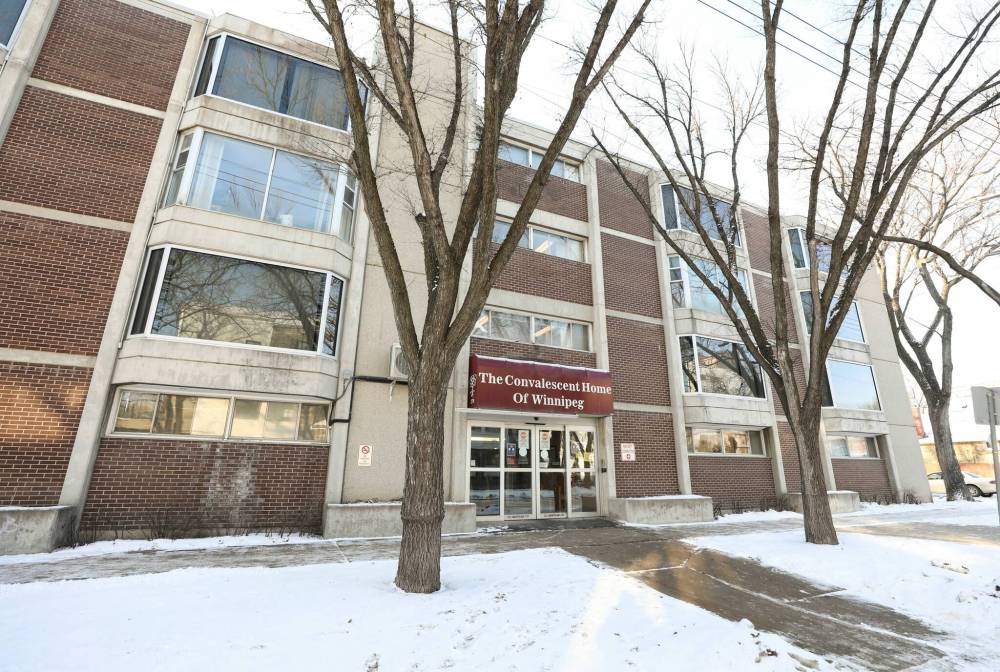
“We just had to shut down everything,” Heppner recalls. “It was hard for staff. It was hard for residents, hard for families. It was just a really, really sad time. I think sadness was the permeating feeling. We’d tried so hard. We had gotten through from Day 1 of saying, ‘there’s this bad virus out there, everybody keep safe, everybody stay home,’ and then…”
She sighs. “As soon as it came into the building, it spread like wildfire.”
Most devastating of all, over that Christmas season and the days after, they’d lost 20 residents to the virus, in a place where staff, Heppner says, cherish each like family. Even when the outbreak was declared over, nothing could go back to anything like normal, but the tree seemed to offer a twinkle of the hope that still lay ahead.
“Because of last Christmas, we weren’t able to celebrate the holiday season in any way, shape, or form, our tree got shoved in a corner surrounded by every gown and glove and mask you could find,” says Heppner, the home’s development co-ordinator.
“I vowed our tree would stay up.”
So the tree stayed, and it changed with the seasons. It became an Easter tree, a Father’s Day tree, a Halloween tree. Heppner tried to get creative with its decorations, to the delight of the 84 residents at the non-profit facility, which is one of the oldest care homes in the province. It became, in its own way, a symbol of a resilient spirit staff fought so hard to maintain.
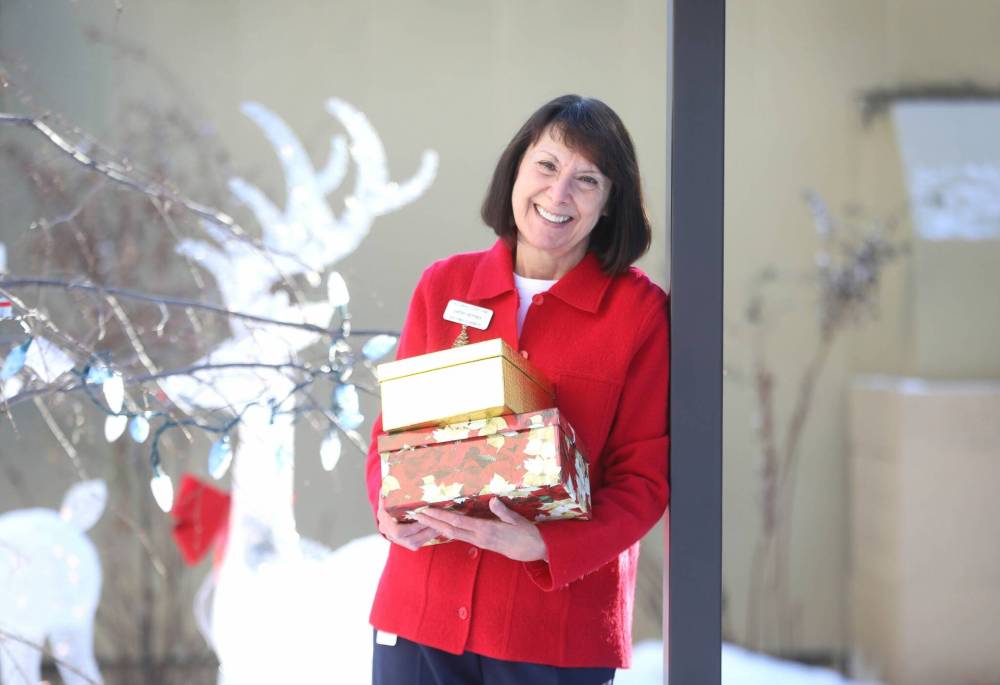
Now it gets to be a Christmas tree again, and that is a gift of its own. Because even as Winnipeg braces against surging case numbers, even as the province huddles awaiting the ultra-transmissible Omicron variant, there’s still been a real Christmas at the Convalescent Home of Winnipeg this year.
And in a time when so much has been lost, everything regained matters.
“Even though we’re certainly in a very tight, restricted position, it’s so much better than last year,” Heppner says.
The tree has been strung with garlands, and the place has been filled with thousands of butter tarts and Christmas cookies. Last week, the home even hosted two live concerts for the first time since the pandemic started, a holiday set by musician Kirk Leavesley. Eggnog and hot chocolate flowed freely; the dining room was decorated in its Christmas best.
Typically, families would be invited. That’s still off the table, but at least residents got to savour the holiday spirit.
“We had a really joyous time,” Heppner says. “We danced about with our masks and our goggles and everything else we’re supposed to be wearing… it’s as normal a pandemic Christmas as we can make it, but it’s so much better and brighter than last year.”
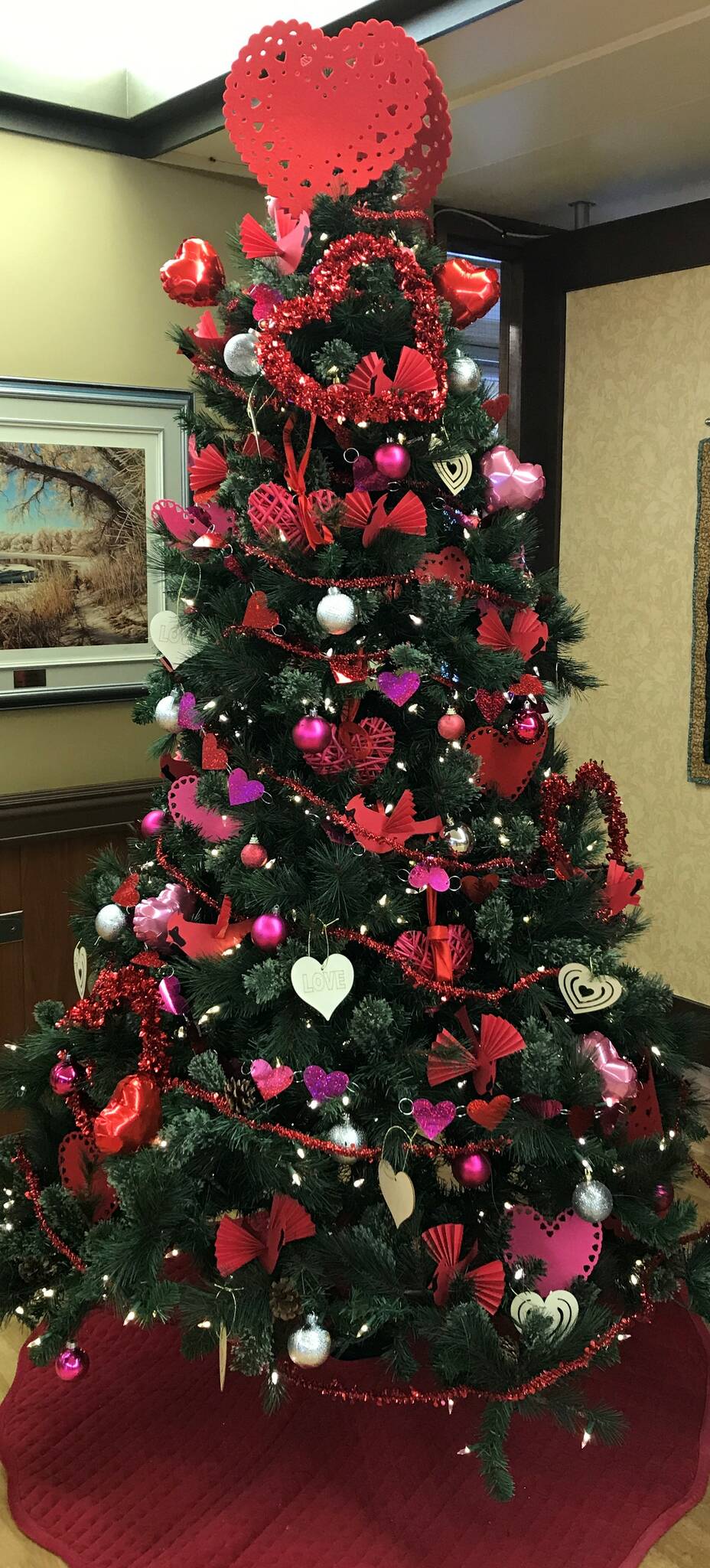
As Leavesley began to strum, working through his set list of holiday classics — White Christmas and Jingle Bells among them — residents’ eyes were shining. One began to cheer and sing along loudly, which isn’t always the case in homes with elderly residents of varying abilities, but it emphasized what having these events can mean.
“She was just over the top,” Leavesley says, laughing. “She got excited about everything; she was just having such a good time. It’s very heartwarming to see that.”
As Leavesley knows, the return of Christmas concerts to local care homes — he’s done a few this month — is important for the residents, in ways that are hard to define. On one hand, a concert is just an hour of time. But on the other, it helps bring back the people, places and events that shaped their lives.
“It’s not so much the music,” he says. “It’s the memories that come with the music. That’s the key thing. For a lot of these people, their memories are usually good memories. They come away from an hour of songs that they all know and they can relate to, and that’s stirred up all these memories, so they come away with a really good feeling.”
Heppner thinks back to her own mother, who suffered from Alzheimer’s and died in 2016. Near the end, she says, her mother wasn’t able to speak, but when Heppner would sing Silent Night, she would sing it back. There’s something about the season, for those who grew up with its traditions: the songs, the lights, the smell of nutmeg and cinnamon.
Yet at the Convalescent Home, the holidays are also a little bittersweet, a reminder of where they were a year ago.
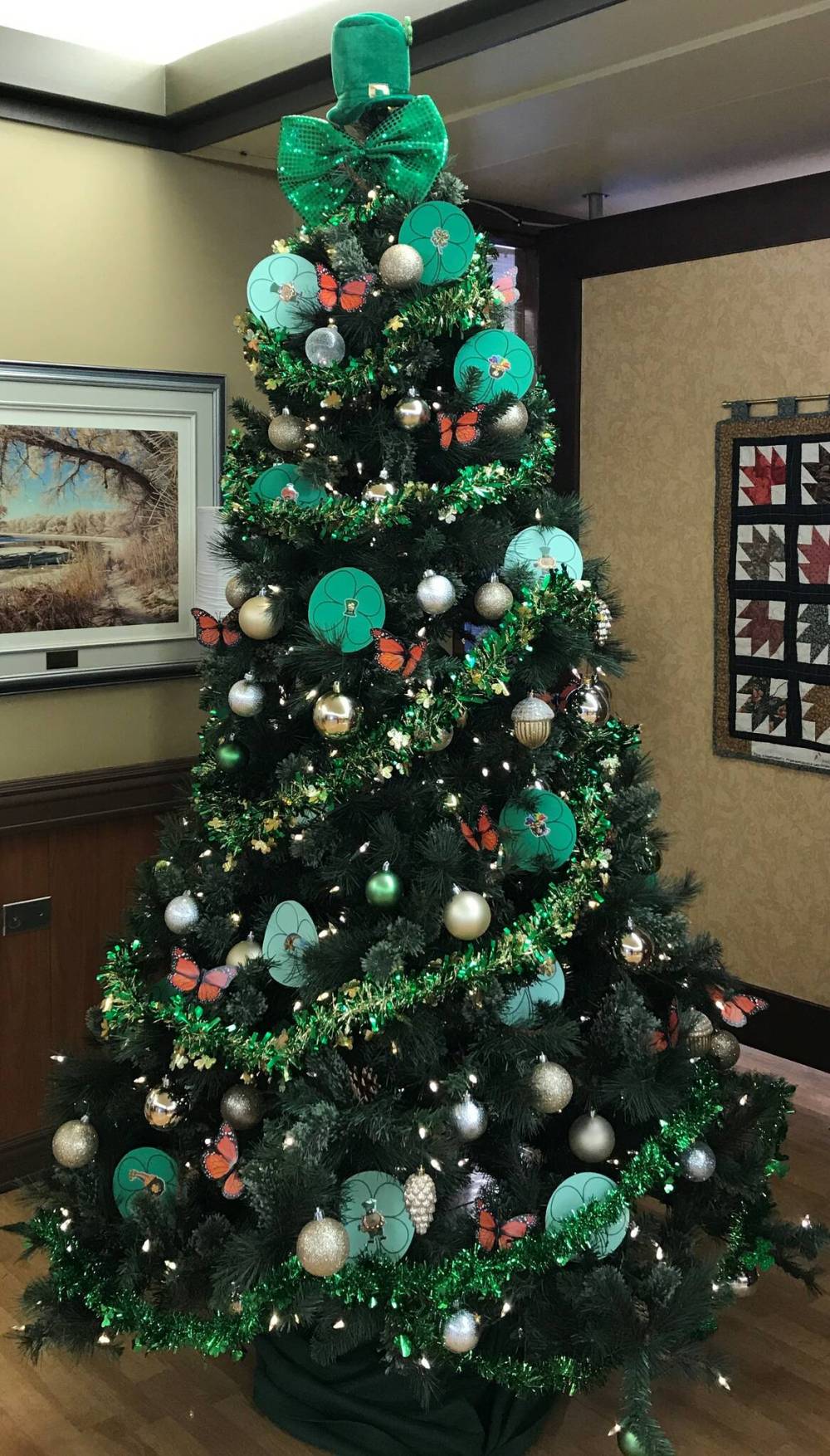
“There were tears,” Heppner says, of the concerts. “You certainly know that for those of our residents who went through the pandemic, they know who’s missing. There are friendships that have been created over the years they’ve been together. They can recognize who is not with us.”
One year after those difficult days, this Christmas is a little brighter. Even with rising case numbers now and the threat of the Omicron variant making things much worse, vaccination rates mean the home is able to offer residents who are medically able a chance to visit their families, even if just for an hour; staff have worked closely with families to make safe plans.
There is still much that’s uncertain. On Tuesday morning, Heppner and other staff waltzed the home’s hallways, delivering gifts to residents: hand lotion, chocolates, cosy shawls. But they were also waiting for an expected communication from the Winnipeg Regional Health Authority, about whether any further restrictions on personal-care homes would be recommended.
At home in St. Vital, Greg Giesbrecht was waiting for that news, too. Last Christmas Day, Giesbrecht wasn’t able to speak to his mother, Mildred, who at 105 is the oldest resident at the Convalescent Home. He had spoken to her on a video call that week, but in recent years it’s been hard for her to follow along on screens, and on Dec. 25 it was just too busy at the facility to call.
In truth, nothing since Mildred moved into the Convalescent Home has been normal. She joined the home in March 2020, right at the start of the pandemic, so family couldn’t help her move in. It was scary for her, Giesbrecht says, especially since she was always so independent; she’d lived on her own right up until age 103.
As the months turned, though, the family was reassured by the support they found at the home, and how Mildred enjoyed it. When the COVID-19 outbreak hit, she tested positive but was lucky; her symptoms were mild, Giesbrecht says, and she “hardly noticed it.” Staff kept her family updated daily, and she was soon on the mend.
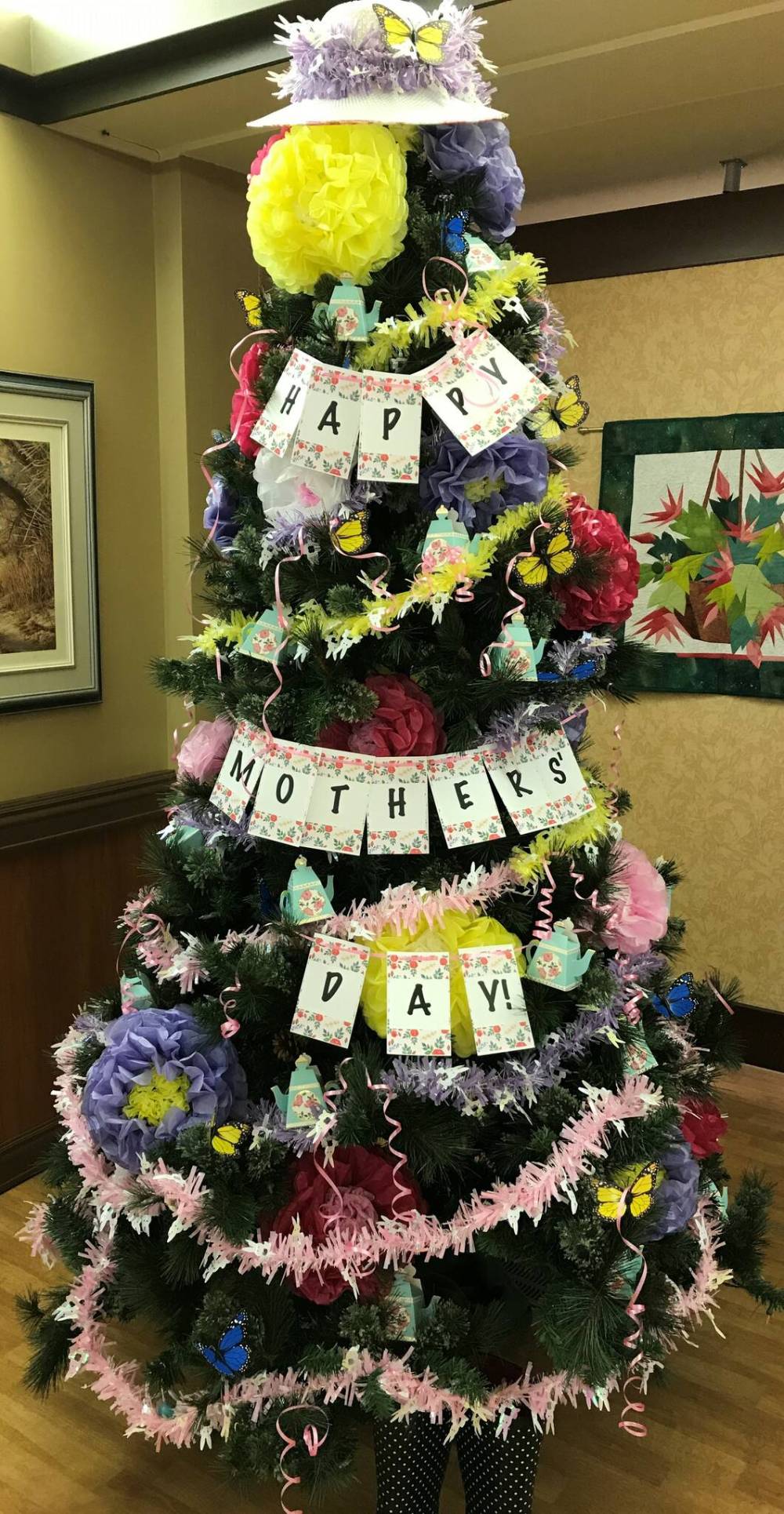
After she recovered, Giesbrecht had a bright-red shirt made for her that read, “I Beat COVID-19. I’m Bad-A—.” He’s not sure she connects the dots on the meaning, he says, but she knows that when she wears it she gets a lot of smiles and laughs from other residents and staff, so she often asks to wear her red T-shirt.
Over the months after the outbreak, chances to connect returned. Last January, the home opened heated outdoor pods for residents to visit with a designated guest.
“That was excellent,” Giesbrecht says. “That was wonderful.”
Then, by the summer, they were able to start visiting her inside, three at at a time.
Still, it’s been so long now since Mildred has been able to be with the whole family. So when Giesbrecht learned that this year, residents would be allowed to take short Christmas outings, they began planning a Dec. 25 visit so she will have a couple of hours to spend with a select group of family members.
It’s not quite the same as old Christmas traditions. Mildred was widowed in her early 30s, when Greg, the youngest of her two children, was just a toddler; she took jobs at credit unions in Gretna, and later, Winnipeg, working hard to take care of her family. Still, she always found time to go to church for Christmas and to do her annual holiday baking.
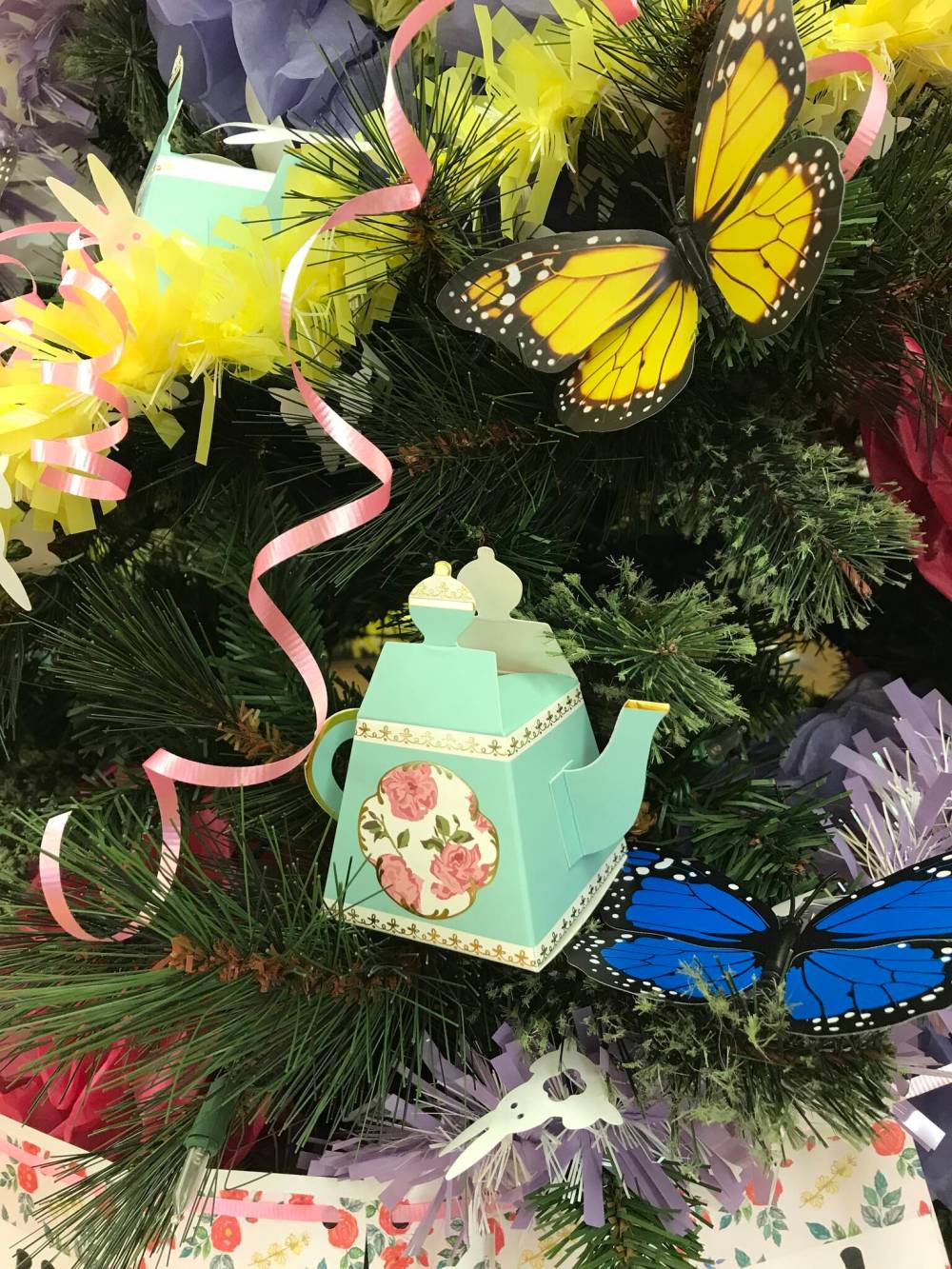
Right up through her last years living on her own, Giesbrecht says, his mother would still fill empty cereal boxes with vast quantities of traditional Mennonite pfeffernuese spiced cookies, and mail them to all her nieces and nephews. Sometimes, she still notices the holiday spirit around her, and exclaims that she has to start doing her baking.
If the Christmas Day visit with her family happens, it will be a gift. Giesbrecht has noticed his mother seems apprehensive about the idea; over the course of the pandemic, she would ask if her family could visit for a meal or if they could go out to dinner. After hearing “I’m sorry, Mom” for so long, Giesbrecht thinks, she’s skeptical about the planned Dec. 25 outing.
But to have her at home on Christmas would be special. It would be a chance to share a meal and take photos with her three-year-old great-granddaughter Sabina, who calls Mildred “Big Mother,” and has had only limited visits during COVID-19. Sometimes, Sabina pretends to call Mildred on the phone.
He’s imagining the two of them together on the holiday.
“It will be even more meaningful years later,” Giesbrecht says. “These moments are going to be precious to all of us.”
Giesbrecht wanted to share his family’s story in part, he says, because of how grateful he is for the care his mom has received at the home. Recently, when a spot opened up for Mildred at a different facility — a newer one with more space, where she might not have to share a room with two others — she was clear about wanting to stay where she is.
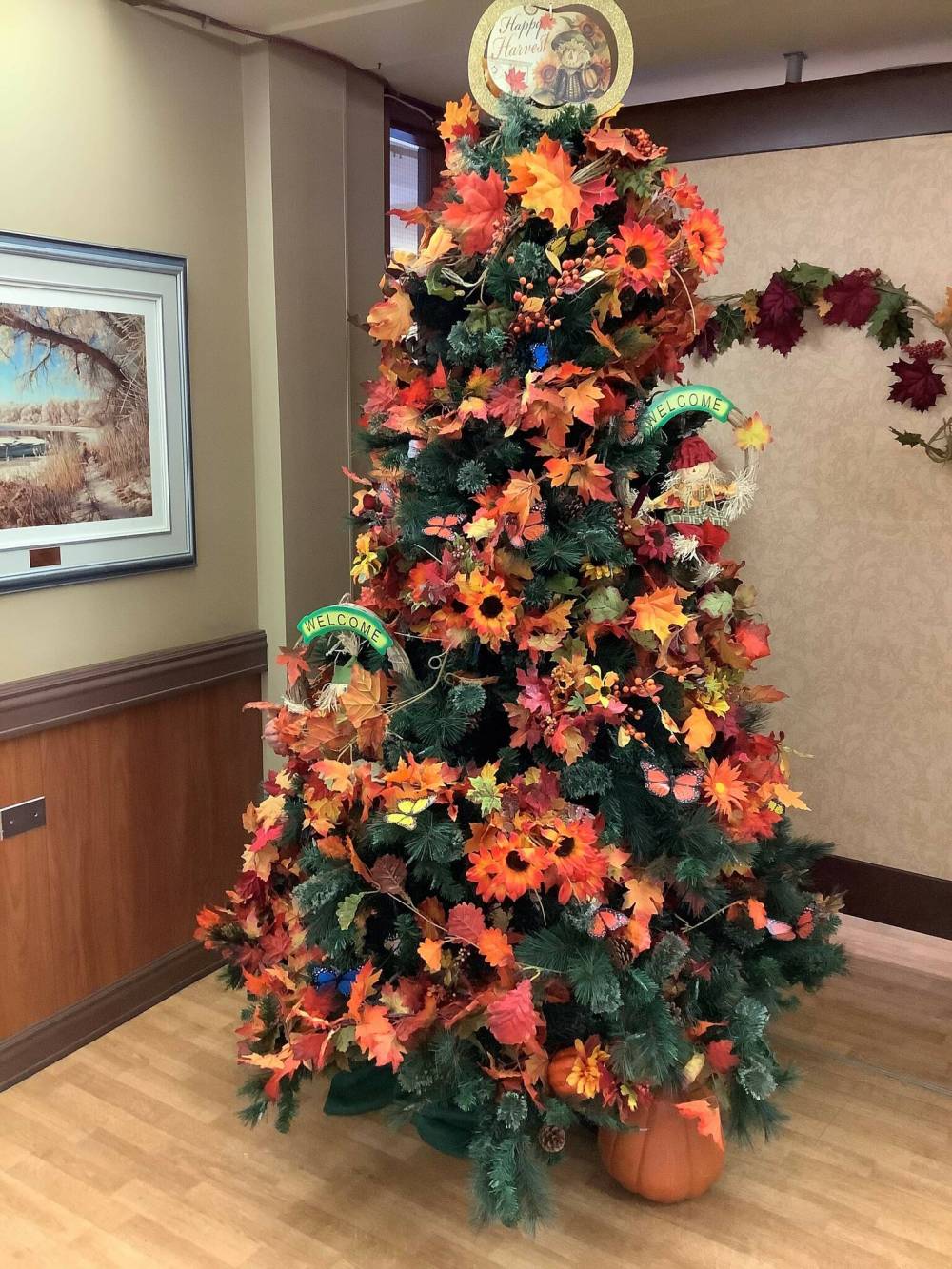
It’s the staff, Giesbrecht says. It’s the connections. It’s how they have helped carry his mother through the last 20 months, with all of the worry and the challenges and the constantly shifting restrictions. And if his mother has been so accepting of the situation, well, that’s in large part because of her strong spirit, but it’s also because of everyone around her at the home, too.
After nearly two years when so many have lost so much, that should be remembered. The holidays have a way of calling us back to the things that matter: memories, moments, connections. The pandemic is a long way from over, but in some of the places that need it the most, those moments are returning. Christmas is back, where it had been lost once before.
“Life is better, and we’re trying to do everything we can to keep it that way for our residents and staff,” Heppner says.
On Tuesday afternoon, Heppner fires off an email to a reporter, brimming with good news: so far, the WRHA is not adding new restrictions.
There are four days until Christmas, and these days that is more than enough time for everything to change. But as it stands now, Mildred will be able to see her great-granddaughter in a holiday visit with family.
The tree that watched over the most difficult days of the Convalescent Home’s history will come down after the holiday. Heppner needs a break, she says, from coming up with creative ideas to decorate it. But then she thinks of how much the residents enjoyed it throughout the year.
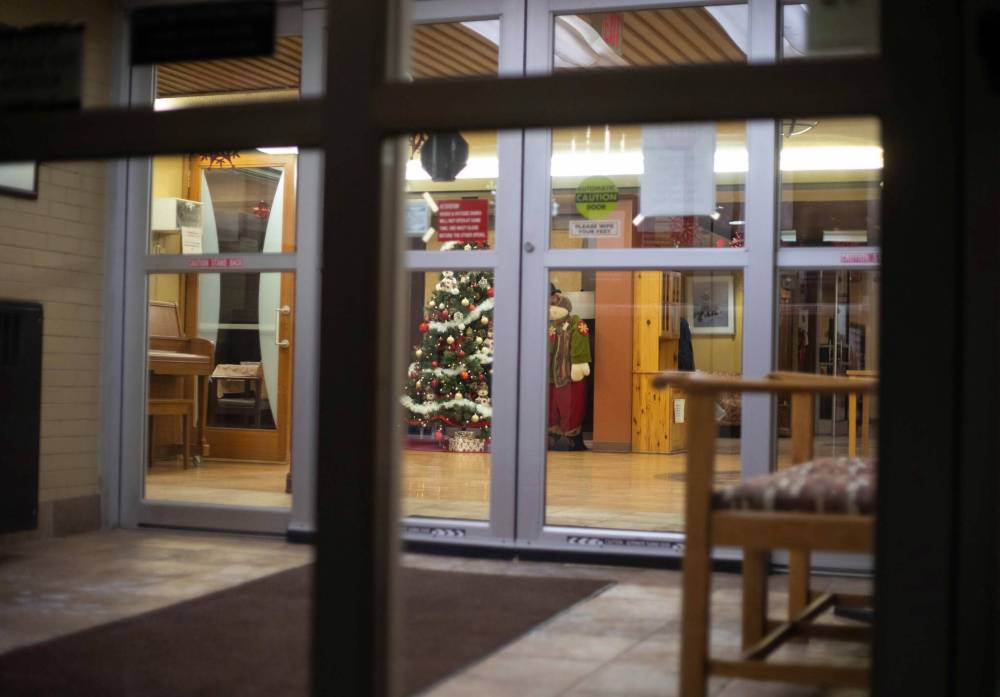
Maybe the pandemic will have started a whole new tradition.
“They’re kind of disappointed it’s coming down,” she says, and laughs. “So it may actually go up again.”
melissa.martin@freepress.mb.ca
Our newsroom depends on a growing audience of readers to power our journalism. If you are not a paid reader, please consider becoming a subscriber.
Our newsroom depends on its audience of readers to power our journalism. Thank you for your support.




